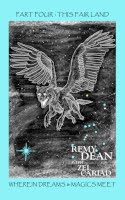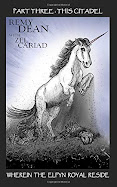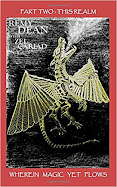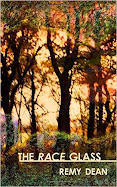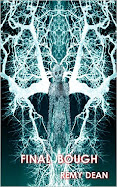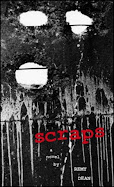
We have had plenty of snow this winter. It came much earlier than usual in what I heard has been the coldest December for 30 years. Here in Snowdonia, it is more likely to be snowing in February-March rather than December-January, but there has been snow on the ground for more than three weeks and in our mountains it lays an even 10 cm on level ground with drifts of up to a metre. Roads and schools have been closed. So, we have been putting food out for the birds and our garden has been visited by a good variety of the feathered folk… the expected Yuletide robins, blackbirds, thrush, tits, finches, jackdaws and the pheasant that became a regular last winter.
When we had a dog, visits to the garden punctuated the day, now, it is the empty bird feeders that coax us out into the cold (or the occasional urge to have snowball battles… or build a snow creature). So, missing Watson-the-dog whilst filling the feeders, I was thinking about the Horizon TV programme last week, which was investigating how closely and naturally we interact with domestic dogs. It was an interesting documentary that was, mainly, scientists confirming what was already deep, instinctual knowledge to dog lovers. They can read us. They are attuned to our moods. They are ‘in-sync’, empathic almost to the point of telepathic.
The gist of the programme was that dogs are the only species apart from ourselves that are fully tuned in to human emotions. The higher apes are not capable of understanding our emotional cues, not even chimps, who are almost genetically related to us. Certainly cats are not. There have been series of experiments to support this, conducted by universities and research centres that looked like great places to work…
The observations from some of these experiments led my mind to Eugene Delacroix and a fuller understanding of something that I have been teaching my art history class for about a decade concerning the ‘left of centre resting gaze’...
Delacroix was neither an ape nor a feline, but was a revolutionary French Romantic painter and a primary influence upon the French Impressionists of the late C19th. He is credited as introducing the use of ‘structural colour’ as a method to govern the way the eye of the viewer moves over the picture plain. He used the distribution of colour within some of his major works as a way to direct how we actually look at his paintings and read the narrative they contain. The two examples I use to illustrate this are his famous 'Liberty Leading The People', and 'The Death of Sardanapalus' (1827).

I already knew that the place that the average human viewer wants to rest their gaze within a composition is slightly left of centre. Delacroix also knew this. I knew this fact without knowing why it was so. (I had my own theory that the act of art appreciation would be an activity dominated by the right-hemisphere of the brain, therefore giving a slight bias to look left.) If you divide these works in half horizontally and then in half vertically, you find the centre of the composition…. and slightly to its left, we find... nothing of interest. There is no reward, nothing to hold our interest, so the eyes look for something more satisfying. In Liberty we are attracted either to the yellow of the dress, or the red section of the flag. This keys us into those colours and then our eyes pick out the flashes of reds and yellows scattered around the composition. This is what gives the painting its sense of movement. Our eyes do not rest easy but are dragged from one key colour detail to the next. This movement of our eyes lends movement to the figures that are actually painted in a very posed manner, static as statues – which, in turn, gives the scene its sense of grandeur and historic import.
He used the same technique with Sardanapalus: slightly left of centre, our eyes find nothing to ‘hold on to’, so it is the red swathe that thrusts diagonally up through the composition, or the ivory white of the sultan’s robes that attract our attention, and then our eyes find the scattered rhythm of these two colours throughout the rest of the canvas. This gives the arrangement of quite static figure studies the atmosphere of a decadent orgy.
Right, back to the dog documentary (or dogumentary). It is a fact that the right side of our face more clearly and honestly expresses our emotions. This is supported by reams of evidence, and is common knowledge to profilers, psychologists, CIA operatives, councillors, etc… and dogs. All of us, except for... well very rare exceptions, are subconsciously aware of this. The right side of the face displays our actual emotions, whilst the expression on the left side displays the modified expression, when we ‘put on a brave face’, or try to give the socially appropriate response. When we look at another human face, we first look at it centrally, to recognise the features of the individual, then a fraction of a second later, we scan the right side of their face to read their emotions. To do this, our gaze finds centre, then shifts slightly left-of-centre – the same pattern as when we engage with a work of art. The key point about dogs is this: they also look at the human face with exactly the same pattern. They do not do this with other dogs, animals, or inanimate objects, they only respond in this subtle way to the human face… recognition of features, then reading of emotion through specifically selecting the right side of the face. There is no other animal that does this. Dogs are uniquely tuned into our true emotions.
The documentary also pointed out that we, as two species, communicate on a number of levels. Dogs recognise and respond to many complex verbal cues and commands and we can understand their limited vocabulary of barks, whines and growls. We both use facial expressions to communicate moods. We both rely on posture and body-language to convey a lot of information in addition to, and sometimes in contradiction of, vocal communication. Dogs can very quickly understand gestures such as pointing and other methods of indicating objects and direction. Again, chimps were shown to have major problems with understanding simple gestures and only a very few individual, female chimps have ever been trained to communicate with signing.
So why is it that dogs are unique in this way? Well, obviously, humans and dogs have been working closely together for a long time, possibly tens of thousands of years. During those millennia, we have been selecting and deselecting dog traits through breeding over countless generations. We have created the domestic dog out of the original wolf packs that began to hunt alongside prehistoric humans and shelter in the same caves during the last Ice age. The survival of our species may well be directly linked to this ongoing partnership with the canine clans. I believe this to be so.
The scientists on the Horizon documentary theorised that we began working closely together because we both used similar hunting methods, were both social carnivores, and through necessity both developed some sort of language - in order to coordinate the hunt and to maintain a social structure of some kind. Wolves that cooperated more readily and effectively with humans would have benefited from more successful hunts, scraps and bones, warm dry caves… Of course, this is a two way deal and humans who worked with wolves would stand a better chance of survival, more effective hunts, advanced warning of danger, defence against other predatory animals, additional warmth in the cave… And so the long, slow, but sure process of domestication began and the wolf eventually became the dog.
Back to the birds and another train of (perhaps whimsical) thought… When I go out to replace the seeds, nuts and fat-balls, the birds no longer take flight and disappear, they simply retreat to the hedge, or the higher branches of trees, watching until the food is re-stocked. They return as soon as I reach the back door. Birds also have a social structure, literally a ‘pecking order’, they have basic language, they have songs that mean safety, and alarm calls that warn of danger. By feeding the birds in our gardens, we are helping to select birds that do not fear us, and feel comfortable within an artificial environment. Are we beginning on that long, slow, but sure process of domestication? There are already ‘bird fanciers’ who have created loads of new varieties. Charles Darwin was fascinated by the pigeon breeders who create fancy varieties by selecting traits and emphasising them to create new dominant features in only a few generations. Not to mention chickens, eh?
Pigeons have been trained as missile guidance systems and also used in reconnaissance. So, in a few millennia, will we be co-dependent with birds? Each of us wearing specially accommodating head gear for our mini-flock to perch upon. With a few whistles and clicks (like a sheepdog handler) sending our birds off to let us know what’s over that hedge or round the next corner. Taking simple messages from one person to another in a noisy room or field. Locating the car keys. Finding a particular person in a crowd… Whistling our dogs over the hills and far away, singing the sky news.
It could happen… a little bird told me.
[For more about Delacroix and to see bigger images of 'Liberty' and 'Sardanapalus' go to Mark Harden's invaluable online Artchive... and I also discuss these works in Evolution of Western Art... ]


.jpg)
